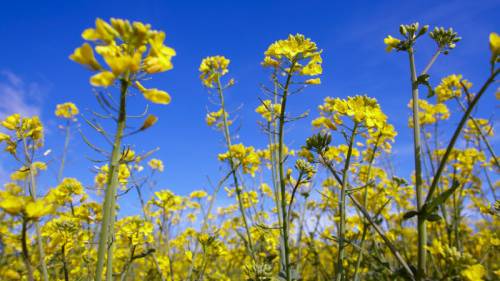Reducing the Role of Monsoons in Farming is Important for India’s Agrochemical Growth
At present, crop inputs like agrochemicals are one of the sectors that may have narrowly escaped the debilitating onslaught of the pandemic. According to India’s Department of Chemicals & Fertilizers, fertilizer sales in April of 2020 was 2.06 million tonnes, compared with 1.42 million tonnes in April of the previous year. Similarly, sales of urea grew by 36.2% that month over the corresponding month last year[1].
The rabi harvest this year also put up a good show — major states harvested 80% to 90% of wheat crop while paddy sowing increased by 27% riding on the hope of an adequate monsoon. The ‘above normal’ monsoon this year will ensure that rabi crops do not face a scarcity of water. Together, these factors make it look like a good year for the agrochemical sector, but it also underlines the heavy dependence of the sector on a natural phenomenon.

Pradip Dave, President, PMFAI
Industry players will remember the mayhem in 2014-15 and 2015-16 caused by monsoon deficits of 12% and 14.5%, respectively. The economic survey of India found that the agriculture sector grew by 1.1% in 2015-16[2]. There is no denying the fact that monsoon will remain a critical factor that also plays a role in the growth of the agrochemical sector, but if it aims to grow, concerted efforts must be taken to reduce the impact of monsoon on the uptake of agrochemicals by farmers.
Mitigating the ‘Make-or-Break’ Role of Monsoon
An off-balance monsoon season spells doom for the agricultural sector in India. While more than normal rain floods the kharif farms and results in serious crop damage or loss, it helps the rabi season by ensuring the reservoirs have enough water. Poor monsoon, on the other hand, means drought and crop loss in the kharif season that affects next cycle and year’s uptake too, and poor water reserve for rabi crops makes its future uncertain. Policymakers must devise ways to reduce the impact of monsoon on the growth of the agrochemical sector and following suggestions may help:
Better availability of institutional credit can help farmers a lot in taking the adverse monsoon impact head on. Despite institutional credit facilities being available for farmers, private moneylenders are a go-to resource for a majority of them — the NABARD All India Rural Financial Inclusion Survey 2016-17 found that 30% of the agricultural households borrow money from non-institutional sources like money lenders and relatives. Most of the farmers choose them over a bank or a non-banking financial institution (NBFI) due to their absence within accessible distance and the mounds of paperwork, a huge task for barely literate farmers. Easy access to farm loans is instrumental in improving a farmer’s capability to acquire good quality agrochemical for his farms.
Improving coverage of irrigated land and increasing their share as compared to exclusively rain-fed ones can help in continuing farmers sow crops at regular intervals. Besides, research has found that insecticides applied through a drip irrigation system can reduce the number of foliar insecticide sprays, which in turn, reduces the risk to non-target species[3]. It is a more common practice among vegetable growers as many of them already use drip irrigation for water management and can add an injection pump and the required safety equipment to inject the soluble pesticides.
Educating farmers on agrochemicals and their use in terms of appropriate kind, dosage, quantity, and application frequency are a less organized and utilized tool. This not only helps farmers realize their need, but also prevents wastage and use of spurious varieties. Owing to gaps in regional languages and dialects and the fear of possible risks of crop failure make it difficult to reach out to many farmers. Developing resources that can fill such gaps will remain critical in the coming days.
Making agriculture climate resilient is the most critical step. Several measures can be taken to ensure this, including enhanced carbon sink in soils, precision farming that enables farmers to make accurate decisions on the need, and application of agricultural inputs regarding soil, weather, and crop, access to market intelligence for timely decision, and efficient use of water and energy. The National Initiative on Climate Resilient Agriculture (NICRA) is a commendable step to this end while several start-ups are doing promising work, especially in precision farming, and steps must be taken to promote them.
Promoting weather-resistant crop varieties can be another effective way to reduce the impact of monsoon on the Indian agriculture sector and thereby, on the growth of the agrochemical industry. The research in India in this direction has been able to develop flood- and salinity-resistant varieties of rice and drought-resistant varieties of pulses. This will also ensure India’s food security goals are met.
However, only lowering agriculture’s dependence on monsoon might not be enough to foster the growth of agrochemicals in India. As an important crop input component, it is important to introduce import substitution for the success of “Make in India” in the agrochemical sector that also holds the key to support the growth of Indian agriculture. Developing end-to-end manufacturing competency with backward integration through the technical stage is the key to achieve self-reliance in the agrochemical sector. It will also need regulatory policy changes for compulsory registration of technical grade pesticides (Active Ingredient) before registration of the formulation — it is a must for the benefit of Indian farmers due to improved availability and affordability of agrochemical products as well as to support growth in the sector.





